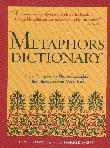SITE GUIDE
REVIEWS
FEATURES
NEWS
Etcetera and
Short Term Listings
LISTINGS
Broadway
Off-Broadway
NYC Restaurants
BOOKS and CDs
OTHER PLACES
Berkshires
London
California
DC
Philadelphia
Elsewhere
QUOTES
On TKTS
PLAYWRIGHTS' ALBUMS
LETTERS TO EDITOR
FILM
LINKS
MISCELLANEOUS
Free Updates
Masthead
Writing for Us
A CurtainUp Review
The Dazzle
By Dave Lohrey
|
You're our enzyme -- in your presence reactions take place.
--- Homer to Milly. |
Some Facts about the Real Collyer Brothers
Richard Greenberg is easily misunderstood. Much of his writing gives the impression that he is an everyday talent. His pronouncements on the theatre and his work are offered flatly, with modesty. His opinions are neither controversial nor seemingly of consequence. He is faceless. Not a star writer, not a person about town, he doesn't appear ready to mount the barricades. His is a quiet gift.
This is not to say that Greenberg is hard to like. Those familiar with his work are bound to have formed a positive impression of the author. "I like him," or "what interesting characters" one can easily imagine the intelligent theatergoer saying after seeing a good production of, say, Eastern Standard, or Hurrah, at Last. He is the sort of playwright whose work one wants to follow.
But such impressions miss the mark. Greenberg is a huge talent and a subversive theatre artist. He is in possession of a wicked mind, reminiscent of Oscar Wilde. He has a mordant sense of humor comparable to that of Joe Orton. All this and more is readily apparent to anyone who sees his most recent playThe Dazzle which opened March 5th at the Gramercy Theatre. This play, perhaps even more than his Pulitzer-nominated Three Days of Rain, suggests that he alone among his contemporaries has the talent to break free from the narrowly familiar to write the big play.
The Dazzle is a wonderful entertainment. Homer and Langley Collyer are the most fascinating characters created by an American playwright since Oscar Madison and Felix Ungar. Unlike the Neil Simon characters, however, Greenberg's misfits are loosely based on an actual family from turn of the 20th century New York. The Collyers once lived in a 5th Avenue mansion in Harlem, which has now been replaced by a parking lot. Sadly, their eccentricities led eventually to their living and dying in isolation. Their tragic end remains a footnote in local lore.
Beyond that, we understand the two brothers to be figments of Mr. Greenberg's considerable imagination. They are reported to have died in an avalanche of collected debris, but as conceived by Greenberg they lived in an avalanche of words. Articulate does not capture the verbal skills Greenberg attributes to the brothers. Hyper-articulation points one in the right direction. These are wordsmith savants, spewing an endless circumlocution that gradually draws the audience to the edge of their seats. Only Tom Stoppard comes close to the verbal facility Greenberg puts on display.
The story of the Collyer brothers is told in two parts. In the first act, we meet Homer (Peter Frechette) and Langley (Reg Rogers) in the drawing room of their family's Victorian mansion. These, we understand, comprise the golden years of their lives, when their eccentricities remained in check and had not yet made living in the world impossible. Langley, a talented pianist, attracts the attentions of one Milly Ashmore (Francie Swift), and preparations for a most improbable marriage are set into motion by Homer, an attorney, who has enough sense to recognize a good thing when he sees it.
The initial scenes have the look and feel of an Oscar Wilde play. The costumes are formal, the banter witty, the setting, baronial. We are given a sense of the oddity of the two brothers, but we do not yet see their capacity for self-destruction. Instead, we are entertained by their conflicting and conflicted hearts as they respond to Miss Ashmore's attentions. Homer is alternatively manipulative and aggressive, while Langley is naively flirtatious. The audience is entranced and then transported with delight when Langley and Homer take turns dancing with Milly. These scenes are so bizarre, the dancing so wild -- Monty Python doesn't come close -- one is simply knocked back in one's seat.
The second act is considerably darker. We now understand that Greenberg has invented an entirely new genre, the drawing room tragedy. The marriage between Langley and Milly Ashmore never came off, so the brothers are alone, together. Langley's eccentricities take on a psychotic dimension, as he turns street scavenger and garbage collector. His winnings are piled literally to the ceiling, blocking windows and doors, leaving only narrow passageways between the once-grand rooms. Homer, now Langley's embittered nursemaid, remains a shadow of his former self. Together they live, but just barely, the victims of neighborhood children who use the house for rock throwing target practice. The return of Milly Ashmore, rather than brightening matters, only foreshadows the brothers' tragic end.
What a bizarre tale. The Collyers make the Addams family look normal. They are right out of Edgar Allen Poe and Greenberg's genius lies in preventing the audience from pulling away emotionally. It is a masterful piece of writing, matched entirely by the superb production, under the direction of David Warren.
Peter Frechette and Reg Rogers are weird and wonderful. Their performances are nothing less than a celebration of the craft. Reg Rogers seems at times to inhabit another planet, yet remains utterly sympathetic. Frechette displays Homer's capacity for cruelty, while remaining exposed as the play's true victim. Francie Swift remarkably holds her own. She never quite lets the men get the best of her. Dignity and poise belong to her alone. Together the trio's performances brighten the stage and bring Greenberg's work hauntingly to life.
Links to Reviews of other Richard Greenberg plays:
Everett Bekin
Three Days of Rain
Hurrah At Last
American Plan
|
Postscript by Elyse Sommer Like Dave Lohrey I found The Dazzle a beautifully crafted play with all the elements of a memorable theater experience in place: Characters who fascinate because they are extraordinary but with whom we can empathize, writing that soars and reaches wonderful little crescendos at the end of each scene, superb performances and direction. While there are undoubtedly other actors who can do justice to these odd but, touching brothers, for now anyway, Peter Freshette and Reg Rogers are the perfect Homer and Langley. The playwright's delineation of the characters and the actors' interpretation make us instantly aware that we are in the company of not one but two eccentrics. Langley is the more obviously over-the-top, the overly sensitive artist who tells Milly that he wishes he didn't have so many senses ("Five is far too many"). The more worldly, bookish Homer has actually practiced admiralty law and traveled but he too has his eccentricities. His rudeness is a veneer -- as when he hands the visiting Milly a book instead of a drink and later shrugs off other rude acts as making for "a better scene" -- for a sensitivity akin to Langley's serial ecstasies, a sensitivity that binds him to his brother even as he yearns for his life to be worthy of a play or a good book. Besides reminding us of Oscar Wilde, as Dave has pointed out, Greenberg's witty dialogue is also reminiscent of George Bernard Shaw. The scene in which Homer and Milly discuss her marrying Langley and he talks about how his mother made him responsible for Langley (as he puts it "to be his brother's accountant") has a particularly pungent Shavian flavor. Milly, Greenberg's completely invented character, adds to the Shavian-Wilde feel. While some may view the subtext of her story as an unnecessary melodramatic fillip, it fits into the overall construct of the play. Not only is Milly needed as the "enzyme" to make the brothers reactive rather than static characters, but to bring home the reality of the melodrama lurking in many an isolated family history. No discussion of the characters is complete without singling out the contribution of Allen Moyer's astounding black and chocolate hued set. As the terrific dance scene Dave mentioned has Homer doing a manic polka to the accompaniment of a waltz cleverly echoes the escalating mental dissonance of the dancers so the set is, if not a character, a visual building block clarifying what makes the Collyers tick (or, more precisely, not tick). Look closely and you'll see some powerful visual metaphors. One particularly telling symbol is a large wreath hanging on the rail of the mansion's second story during a Christmas party. In the second act that wreath is replaced by another ring, a life preserver which is as useless as all the other objects. Even the talented playwright couldn't have dreamt up a more apt name for the tragic Homer. But leave it to Greenberg to give the increasingly blind Homer this ironic comment on his name: "Literature insists on itself." Speaking of names, the title has several possible explanations. Dazzling was a favorite adjective during the first quarter of the century and the playwright seasons his dialogue with it: Langley, lovingly examining a piece of string, remembers a similar object from his nursery as being "dazzlingly colored". Homer refers to the "dazzling array of phobias of modern life who always get their way" and s presciently ponders who will be there to be his servant when he joins their ranks. For me, The Dazzle is, to paraphrase Homer, a title insisting on describing itself-- a dazzling play, dazzlingly acted and staged. Funniest exit line: "I'm going home to straighten up my house." A Roundabout take note exit line: "Why in the world did the Roundabout put a one-man non-play into their Broadway theater when they could have won a bunch of Tonys for this one?" (editor's note: The one-man play referenced is An Almost Holy Picture.) |
|
THE DAZZLE
Playwright: Richard Greenberg Directed by David Warren Starring Peter Frechette and Reg Rogers, also Francie Swift Costume Design: Gregory A. Gale Lighting Design: Jeff Croiter Sound: Robert Murphy Original Music: Lawrence Yurman. Running Time: 2 hours plus 15 minute intermission Roundabout at Gramercy Theatre, 127 East 23rd St 212-777-4900 or 212-307-4100 Tuesday through Saturday evenings at 7:30PM with Wednesday, Saturday and Sunday matinees at 2:00PM -- $55 2/15/02-5/26/02; opening 3/05/02 Reviewed by Dave Lohrey and Elyse Sommer, March 2nd performance . |
|
Some Facts about the Real Collyer Brothers
by Elyse Sommer Playwright Richard Greenberg has been quoted as saying that he remembers his mother telling him to clean up his room because it "was beginning to look like the Collyers brothers." Like Greenberg, we can all identify with being too neat or not neat enough , but the Collyer Brothers took this impulse to such an extreme that their names became synonymous with mess and clutter. Mr. Greenberg, while naming his two main characters after two men who actually existed, has used their story to jumpstart his imagination. In his author's note he states that ";The Dazzle is based on the lives of the Collyer brothers, about whom I know almost nothing." And while he clearly knew enough to give his play a flavor of authenticity, he has indeed transcended fact to create this intriguing work of fiction. As a viewer you too need to know "almost nothing" about the real Collyers to enjoy the play and to understand Greenberg's version of the brothers and Milly Ashmore, his invented human catalyst or as he puts it "their enzyme". But, while you'll leave the theater remembering Greenberg's Langley and Homer, you'll also find yourself wanting to know more about those sad figures who inspired this play. To satisfy that curiosity, some facts to add to the basics in Dave Lohrey's review:
|

6, 500 Comparative Phrases including 800 Shakespearean Metaphors by CurtainUp's editor.
Click image to buy.
Go here for details and larger image.


